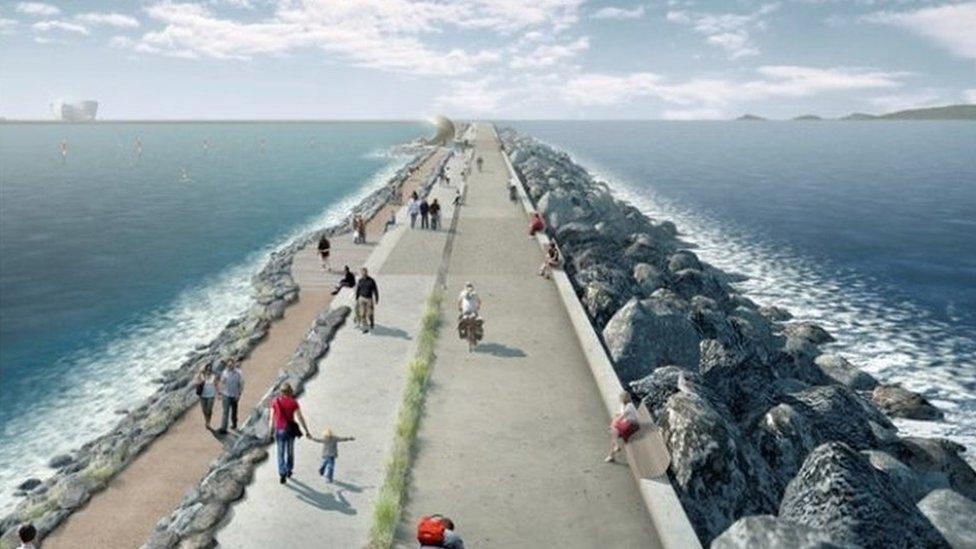Tidal lagoon: £1.3bn Swansea Bay project backed by review
- Published
- comments
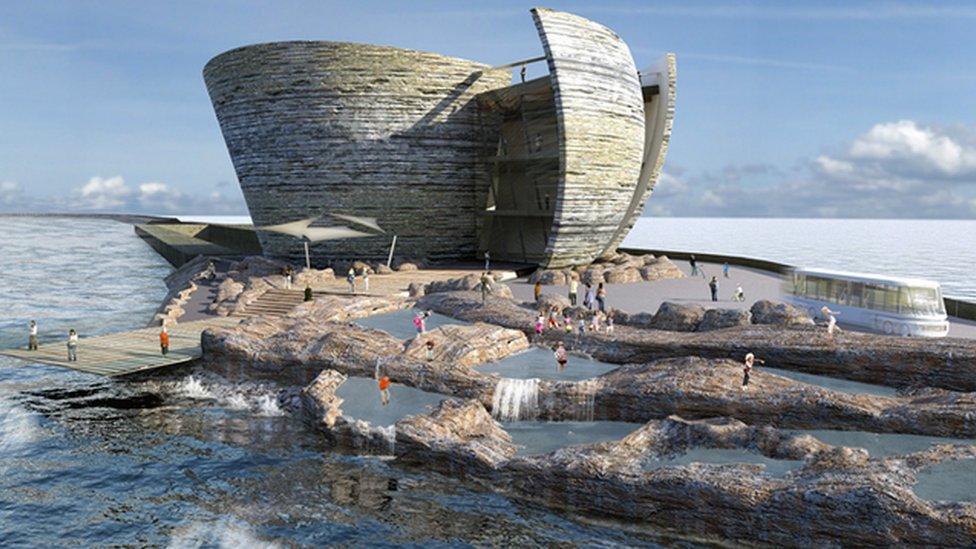
The project would see energy produced for 14 out of every 24 hours, according to TLP
Plans for a £1.3bn tidal lagoon in Swansea Bay have been backed by a government-commissioned review.
Charles Hendry's independent report , externalinto the technology's viability said it would make a "strong contribution" to the UK's energy supply.
He said it was cost effective and would bring "significant economic opportunity".
The UK government still needs to agree on a deal and a marine licence would also need to be approved.
Mr Hendry said moving ahead with a pathfinder lagoon off the Swansea coast should be seen as a "no regrets" policy.
There are hopes of developing a network of larger lagoons around the UK coast, harnessing power from the ebb and flow of the sea's tides.
But Mr Hendry believed that was "too ambitious a goal" before even one had been built and "could only be considered properly when more progress had been made".
Tidal Lagoon Power chief executive Mark Shorrock was enthusiastic about the conclusions
Mr Hendry made 30 conclusions, including:
The technology would "contribute positively" towards the UK's decarbonisation goals
It was "beyond question" that local economic regeneration would follow a tidal lagoon
It offers "significant economic opportunity" for Wales and the UK
The potential impact on consumer bills of large scale tidal lagoons "appears attractive, particularly when compared to nuclear projects" in the long term
A high level of monitoring of environmental impacts would still be needed
A Tidal Power Authority should oversee the new industry
Competitive tendering for future projects "to deliver the most substantial cost reductions" - similar to the nuclear industry
Charles Hendry said the tidal lagoon power plan was affordable
Former UK energy minister Mr Hendry has been gathering evidence for nearly a year for his independent inquiry, including visits to all the potential sites and discussions with industry.
Mr Hendry said: "If you look at the cost spread out over the entire lifetime - 120 years for the project - it comes out at about 30p per household for the next 30 years. That's less than a pint of milk.
"That's where I think we can start a new industry and we can do it at an affordable cost to consumers."
The Swansea Bay project would involve 16 turbines along a breakwater but is seen as only the start - a prototype for much larger lagoons.
The "fleet" includes one off the coast of Cardiff - east of where Cardiff Bay is now - Newport, Bridgwater Bay in Somerset, Colwyn Bay and west Cumbria, north of Workington.
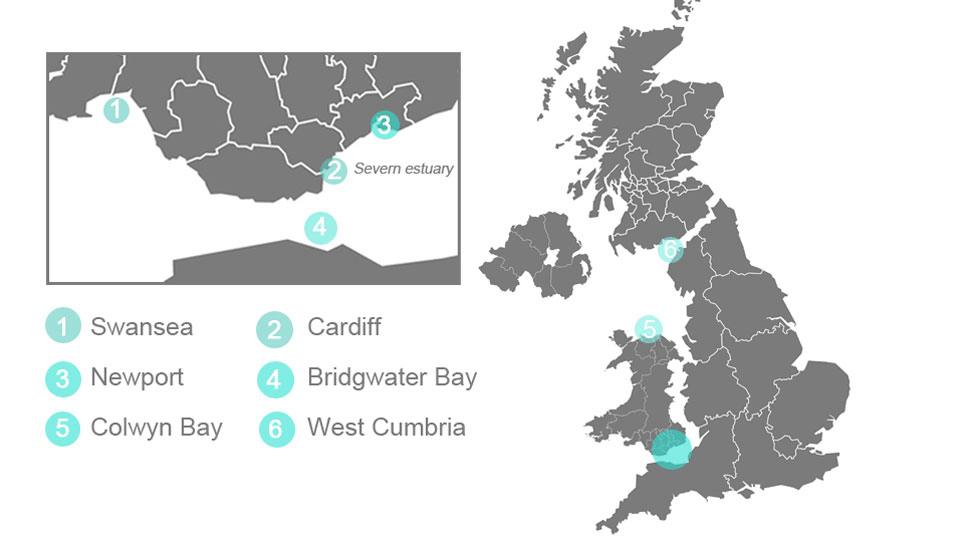

Analysis
By Roger Harrabin, BBC environment analyst
There are two big questions over lagoons: Will they harm wildlife and can they be built cheaply enough? There's no evidence yet on wildlife but most environment groups seem willing to see one trial lagoon built, then make an assessment.
On price, the firms backing the technology are confident they can force down costs if they get approval for a series of lagoons around the coastline.
Lagoons involve two long-established technologies - building breakwaters and running hydro-electric turbines - so some will be sceptical.
But recent experience with offshore wind turbines has shown costs can sometimes fall faster than predicted.
The firms hope that as Theresa May's government has already embraced two mega projects in HS2 and Hinkley Point, it may be enthused by another plan for engineering on a heroic scale.
Follow Roger on Twitter @rharrabin

Developer Tidal Lagoon Power (TLP) claims its Cardiff lagoon would be large enough to generate enough electricity for all homes in Wales.
This economies of scale argument is central to one of the key questions over the so-called "strike price" - how much the UK government is prepared to pay for the energy the lagoons will generate.
Gloucester-based TLP's contention is that the Swansea project will be a test bed. But the technology will come into its own - and could eventually meet 8% of the UK's energy needs - when the network of more cost-effective, larger lagoons come on stream over the next 10 years.
It forecasts it will be less than the cost of electricity from the new Hinkley C nuclear power station - and lagoons will also last 120 years.
John Wheeler, GE's project manager for the Swansea Bay tidal lagoon, explains how industry could benefit
Tidal energy plans for Swansea Bay first emerged in 2003 but the current project has been developed over the last four years.
But there are still environmental concerns and Natural Resources Wales (NRW) will be looking at the impact on flooding, fish, birds and marine habitats before it awards the all-important marine licence.
The process started in 2014 with no sign of it being resolved, with TLP and NRW saying they have been in "exhaustive discussions" about the impact on fish.
Business and Energy Secretary Greg Clark welcomed the hard work that had gone into the review and said the UK government's energy planning was focused on ensuring affordable, secure, low-carbon energy.
"We will now consider recommendations and determine what decision is in the best interests of the UK energy in the long term," he said.
The Welsh Government said it "clearly presents Wales with significant potential opportunities".
Watch Tidal Lagoon Power's video of how the turbines would work
- Published12 January 2017
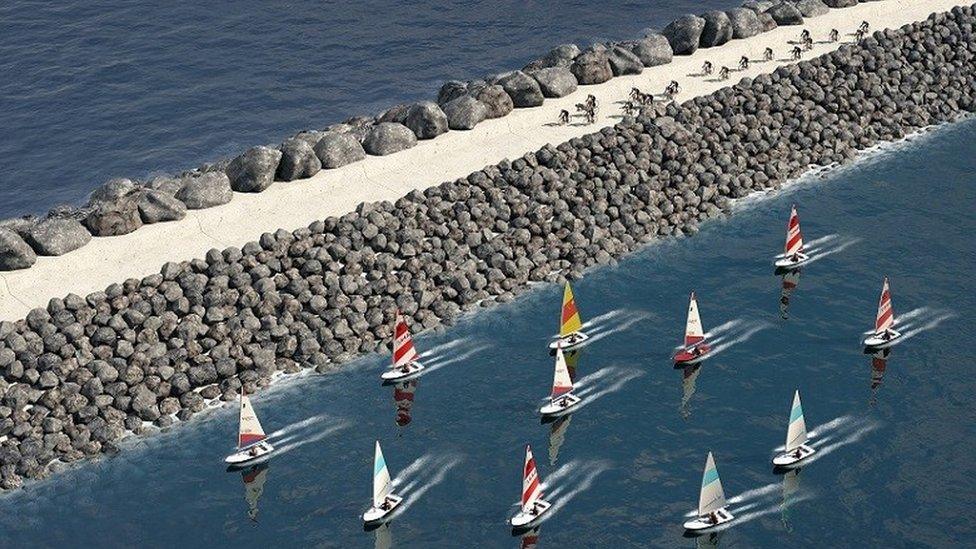
- Published12 January 2017
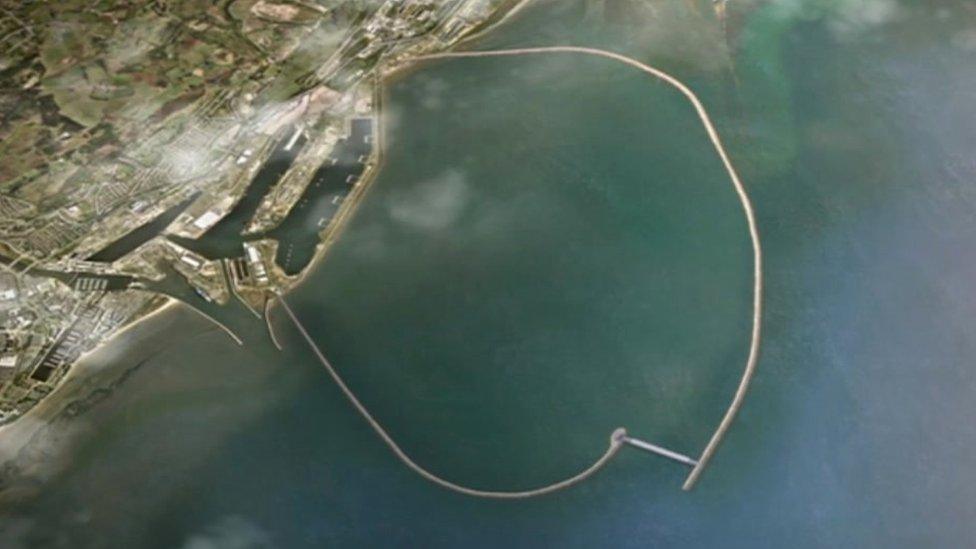
- Published10 January 2017

- Published7 November 2016

- Published7 November 2016

- Published11 October 2016
